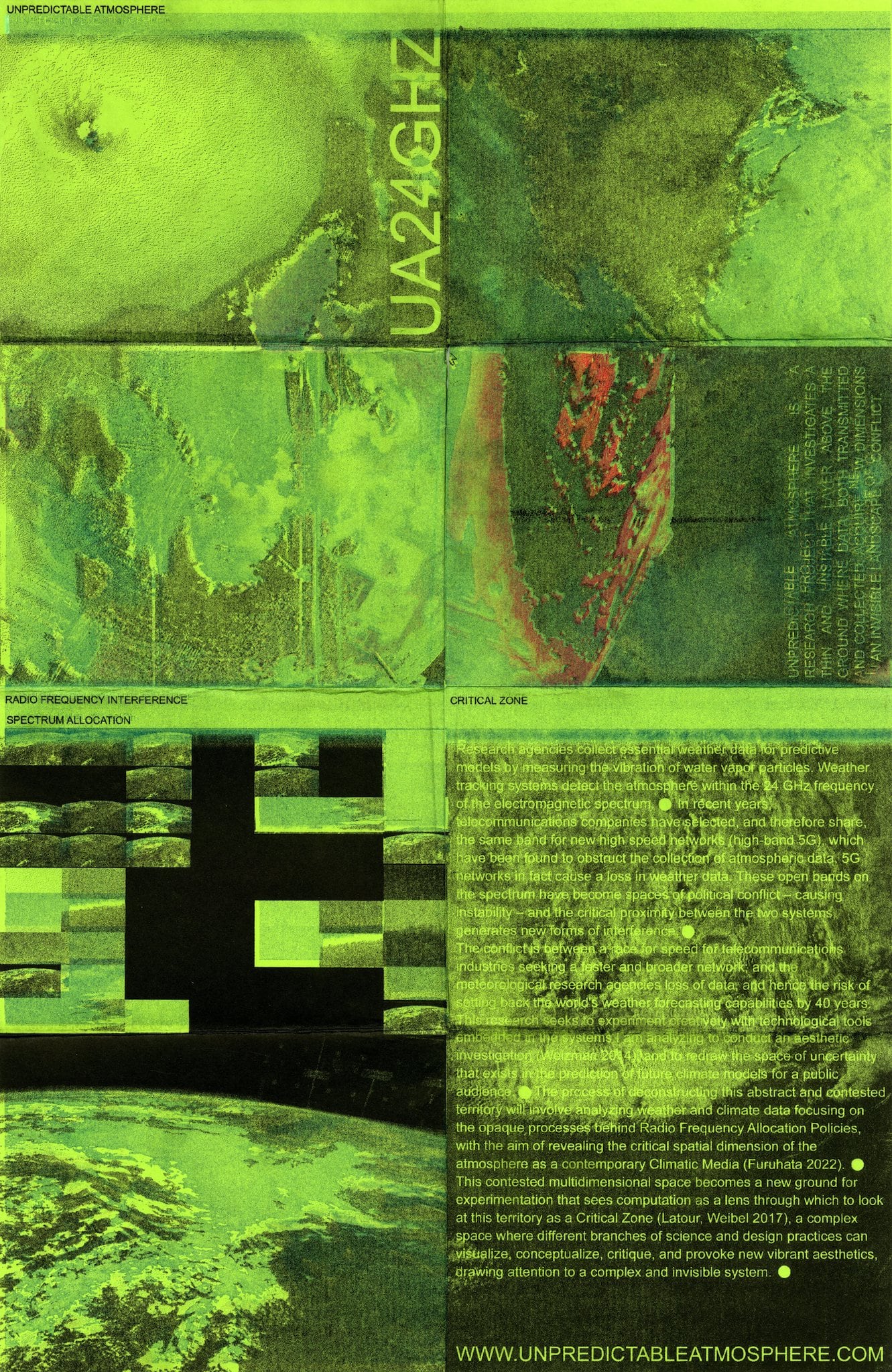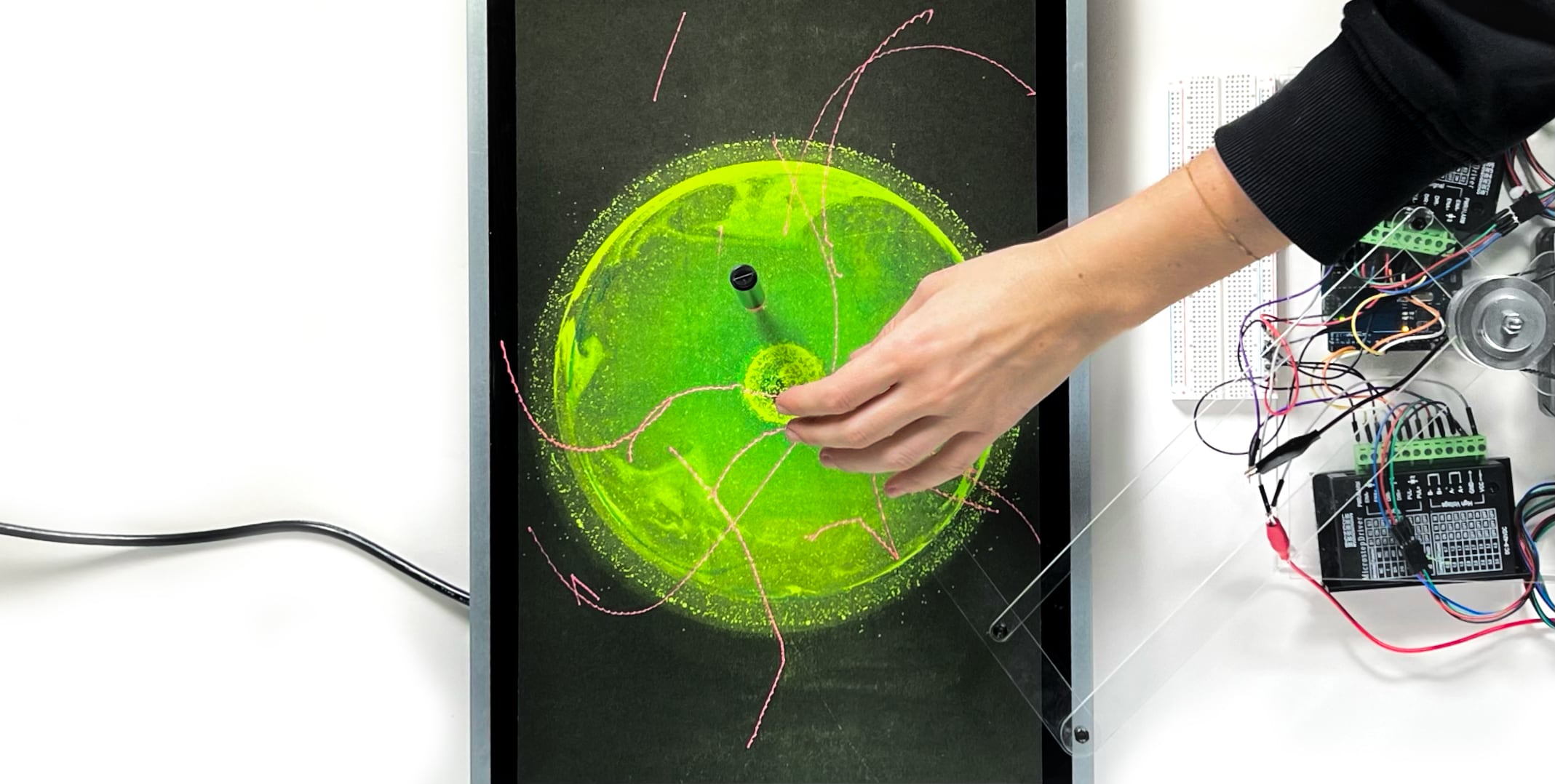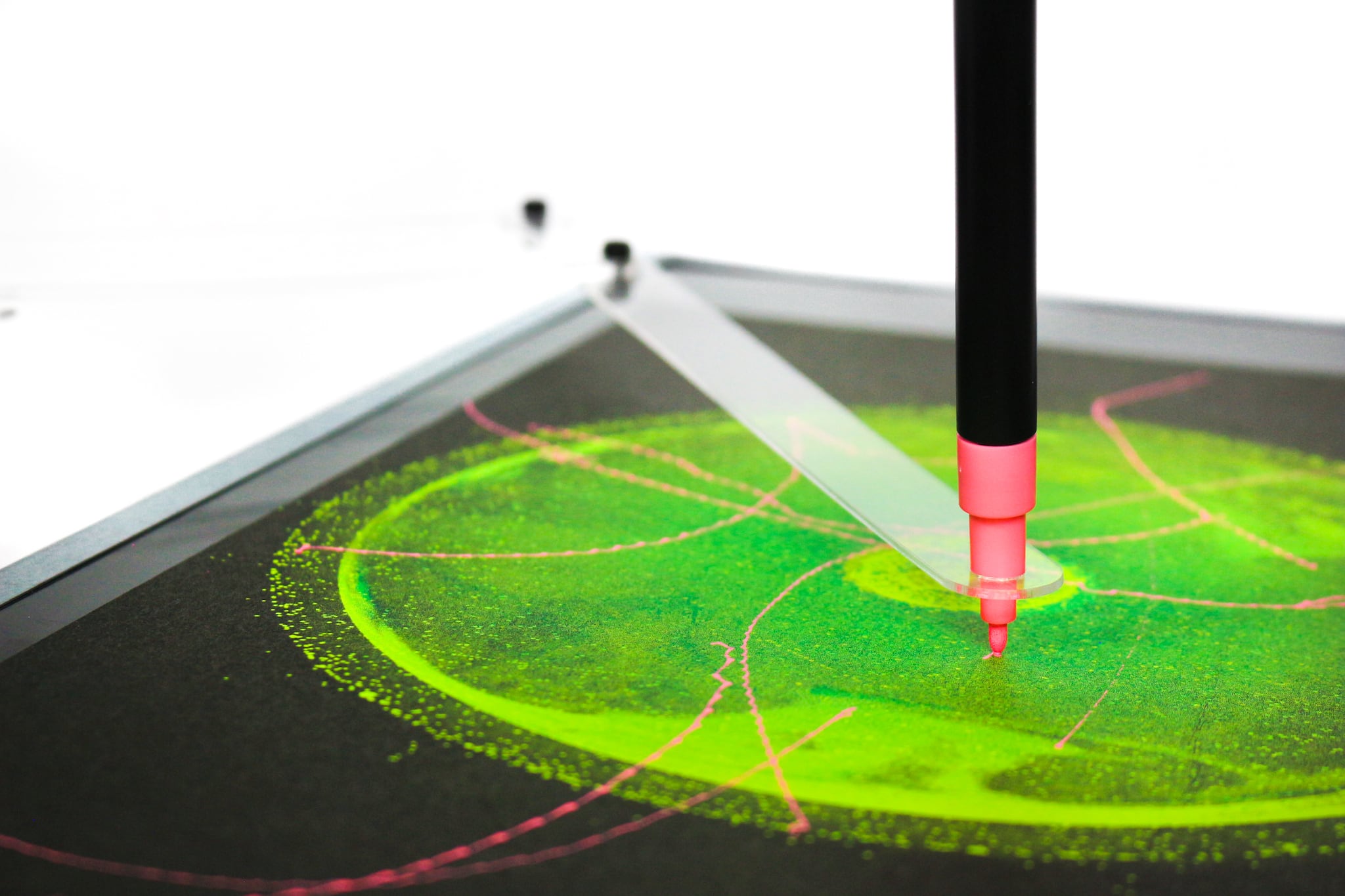Unpredictable Atmosphere
Lucia Rebolino
Working in the Critical Zone, at the intersection of different scales, how can we use computation as a lens to redefine the space of uncertainty and interference? [1].
Research agencies collect essential weather data by measuring the vibration of water vapor particles. Weather tracking systems detect the atmosphere within the 24 GHz frequency of the electromagnetic spectrum. However, in recent years, telecommunications companies have selected the same band for their new high-band 5G networks, obstructing the collection of atmospheric data. This has led to political conflicts over the use of these open bands on the spectrum. This contested multidimensional space has become a new arena for experimentation and the critical proximity between the two systems has generated new forms of interference.
The research views computation as a lens through which to examine this critical space. In particular, the Critical Zone[2], a term coined by Bruno Latour, was first used in its current sense in 2001 by the U.S. National Research Council. It arose from the observed disconnection between laboratory experiments and field observations. The Critical Zone is a thin, composite, and heterogeneous layer consisting of soil, gasses, and water, all interrelated and addressed by different branches of science. However, as Latour said during the exposition of the "Critical Zones Observatory", it is sufficiently complex to require collaboration among many established disciplines.
There is currently a conflict taking place in this unstable section of the atmosphere: a race for speed between telecommunications industries seeking a faster network and meteorological research agencies who risk setting back the world's weather forecasting capabilities by 40 years. International and national regulatory organizations have reserved portions of the microwave spectrum for specific weather passive observation purposes. Passive remote sensing in the microwave bands is the first technique used to improve the accuracy of numerical weather prediction (NWP) and is essential for determining the state of the atmosphere. The critical proximity between the two technologies has placed atmospheric science in a spectrum-constrained dimension. The research seeks to experiment with creative and technological tools, conducting an aesthetic investigation [3], to redraw the space of uncertainty that exists in the prediction of future climate models. Based on the previous definition of the Critical Zone as a discontinuity between laboratory and field observation, the research investigates the different dimensions of the interference that exist between sensors, radars, and satellite imagery through multiple perspectives and scales.
As Latour stated in "Down to Earth: Politics in the New Climatic Regime"[4], the Terrestrial model, built from the intersection of the Global and Local perspectives, is the only one capable of solving climatic and political issues. The process of deconstructing this abstract and contested territory will involve analyzing weather and climate data, focusing on the non-transparent processes behind Radio Frequency Allocation Policies, with the aim of revealing the critical spatial dimension of the atmosphere as a contemporary Climatic Media [5].

The aesthetic investigation of the project involves the use of different media and techniques to create a new critical framework for spatializing and understanding the concept of interference. By translating the data and web structure into a physical medium, a performative project has been created that allows for real-time interference. A drawing machine traces the path of satellites directly affected by the interference within the web structure. This process ultimately deconstructs into a Zine for a public science audience.


Latour, B., Facing Gaia: Eight Lectures on the New Climatic Regime, Polity Press, 2017 ↩︎
Latour, B., & Weibel, P., Critical zones: The science and politics of landing on Earth, ZKM Center for Art and Media Karlsruhe, 2017 ↩︎
Weizman, E., Fuller M., Investigative Aesthetics: Conflicts and Commons in the Politics of Truth, Verso Book, 2021 ↩︎
Latour, B., Down to Earth: Politics in the New Climatic Regime, Polity Press, 2018 ↩︎
Furuhata, Y., Climatic Media, Duke University Press, 2022 ↩︎